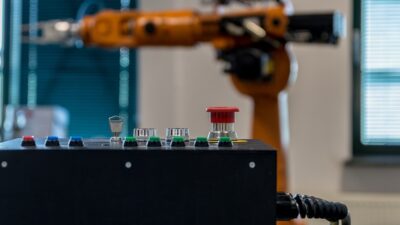As the world confronts the pressing challenge of climate change, innovative solutions are being developed across various sectors. Among the most promising advancements are the rapid strides in robotics. This convergence of technology and environmental stewardship has birthed a new era—often referred to as the "Robo-Revolution." From conservation efforts to agricultural practices, robotics is emerging as a pivotal tool in the fight against climate change.
1. Precision Agriculture: Cultivating Sustainability
One of the most significant impacts of robotics can be seen in agriculture. The global demand for food continues to grow, putting immense pressure on farming practices. Traditionally, agriculture has been a resource-intensive industry, contributing to greenhouse gas emissions through excessive use of fertilizers, pesticides, and water.
Enter robotic systems equipped with artificial intelligence and machine learning. These autonomous machines can accurately analyze soil health, monitor crop growth, and optimize the use of resources. For instance, drones equipped with sensors can map fields, identifying areas that require nutrients or water. This data-driven approach enables farmers to apply fertilizers and pesticides only where necessary, reducing chemical runoff and energy consumption.
2. Renewable Energy: Robots as the New Workforce
As the world shifts toward renewable energy sources, the installation and maintenance of solar panels and wind turbines must keep pace. Robotics plays a crucial role in this transformation. Automated systems can efficiently assemble and position solar panels, which not only speeds up deployment but also reduces labor costs and human error.
Moreover, robots can monitor the infrastructure of renewable energy systems. For example, drones equipped with thermal imaging can inspect solar arrays for malfunctions or inefficiencies, ensuring that these essential systems operate at peak performance. By increasing the efficiency and reliability of renewable energy sources, robots contribute directly to reducing reliance on fossil fuels.
3. Conservation Efforts: Protecting Our Planet’s Biodiversity
The loss of biodiversity is another critical facet of climate change. Robotics is stepping in to monitor wildlife populations and habitats, providing data that is essential for conservation efforts. For example, unmanned aerial vehicles (UAVs) are increasingly used to track animal movements, assess habitat changes, and even combat poaching in remote areas.
Robots can also assist in reforestation efforts. Drones can be programmed to plant seeds in deforested areas quickly and efficiently, covering large tracts of land in a fraction of the time it would take human workers. With the potential to plant billions of trees, this technology could have a significant impact on carbon sequestration.
4. Disaster Response: Robots to the Rescue
Climate change is increasing the frequency and intensity of natural disasters. Robots equipped with advanced sensors and AI capabilities can assist in disaster response and recovery efforts. Autonomous ground vehicles and drones can navigate hazardous environments, delivering supplies, rescuing stranded individuals, and providing real-time information to emergency responders.
Moreover, robots can support environmental monitoring, assessing the impact of natural disasters on ecosystems. By collecting data from affected areas, robots can help scientists and policymakers to develop more effective responses to climate change.
5. Waste Management: A Cleaner Tomorrow
Waste management is another area where robotics is making strides. Automated systems can improve recycling processes, sorting materials more efficiently than humans can. Robotic arms equipped with AI can identify recyclables, reducing contamination in recycling streams and increasing the amount of materials that can be reused.
Furthermore, autonomous waste collection vehicles can optimize routes, reducing fuel consumption and greenhouse gas emissions associated with waste transport. By minimizing waste and enhancing recycling efforts, robotics is helping to create a more circular economy.
Conclusion: A Collaborative Future
The integration of robotics into climate change mitigation strategies is a testament to human ingenuity and innovation. However, the Robo-Revolution is not a panacea; it must be part of a broader strategy that includes policy changes, community engagement, and sustainable practices.
As we move forward, collaboration between technologists, environmentalists, and policymakers will be essential. Together, leveraging the power of robotics alongside traditional environmental conservation methods, we can develop dynamic solutions to tackle climate change effectively. The future is promising, but it requires collective action to ensure that these technological advancements serve not just the industry but the planet as well.



